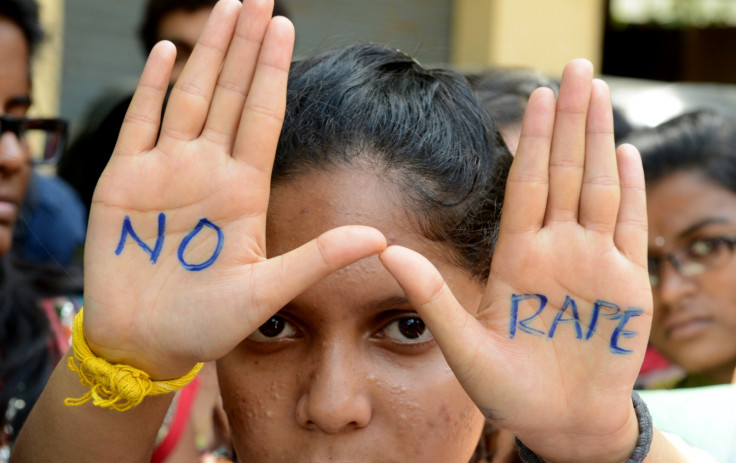Women's Equality Day: The 10 Biggest Barriers Facing Equal Rights
US marking Women's Equality Day today commemorating women's suffrage

On this day in 1920, the United States Congress granted women the right to vote. That day – since proclaimed Women's Equality Day – marks the end of a half-century campaign for women's suffrage in the country.
Yet nearly a century later, barriers still stand in the way of equality between the sexes. From the widening gender pay gap, to the disproportionate number of women who experience sexual violence, inequalities remain.
Women in Workplace
Despite the number of women-owned businesses in the US growing at twice the rate of all firms, the number of women in chief executive positions remains dismal. As of 2014, females currently hold 4.8% of Fortune magazine's Fortune 500 CEO positions in the US.
A similar story prevails in the UK. In March, it was revealed that only 20% of FTSE 100 boardroom members are held by females.
Around 40% of the UK population believe in gender-stereotyped roles for women. A WorldPay Zinc study of attitudes in the workplace found one-in-four adults believe men should stay away from midwifery, nursing or beautician jobs.
Pay Gap
More than 40 years after the UK's Equal Pay Act, female bosses in the UK are still earning 75% as much as their male colleagues – meaning they would have to work until they were nearly 80 to catch up with men's lifetime earnings.
Over the last decade in the US, median earnings for women working full-time year-round have been just 77% of men's earnings.
Sexual Violence
Sexual assault disproportionately affects women. One in every six American women has been the victim of an attempted or completed rape in her lifetime, according to the charity RAINN. Approximately 85,000 women are raped on average in England and Wales every year.
Worldwide, reliable figures are hard to come by as rape is rarely reported, due to the extreme social stigma cast on women who have been sexually assaulted.
Marital rape is not a criminal offence in several countries, including Afghanistan, Pakistan, Yemen, Saudi Arabia, Bahamas and Nigeria.
Women in Politics
Across the world, cultural attitudes about gender roles continue to subjugate women and serve to limit their representation in public life. The global participation rate of women in national-level parliaments is nearly 20%.

In the UK, nearly 25% MPs in the House of Commons today are women, and female members of the House of Lords make up around 20% of its total membership.
On average in the US, only one woman runs for every 30 elected positions available at a national, state or local level.
Education
Improving A girl's education level has been proven to have clear impacts on their physical health and economic future.
Every year of school for girls increases their lifetime income by 15% – yet in the poorest countries in the world, half of girls do not attend secondary school.
Female Genital Mutilation
Around 125 million girls and women worldwide have been subjected to FGM or genital cutting – most of them before the age of 15.
It is performed by ethnic groups in 27 countries in sub-Saharan and north-east Africa, in Yemen and Iraqi Kurdistan, and to a lesser extent elsewhere in Asia and within immigrant communities around the world.
As many as 137,000 women are living with female genital mutilation in England and Wales.
Sexual Slavery
Women and girls make up around 95% of victims of sexual exploitation – including sex trafficking and around 21 million men, women and children are trafficked within their own countries and across international borders, to be sold as forced labourers, child soldiers or for forced marriages.
Child Marriage
Driven by poverty, cultural tradition and religious or social pressure, One third of the world's girls are married before the age of 18 and 1-in-9 are married before the age of 15.
Girls younger than 15 are five times more likely to die in childbirth than women in their 20s, according to the International Center for Research on Women – and child brides are more likely to experience domestic violence than peers who marry later.
Sex-selective abortion
The selective abortion of female fetuses is most common in areas where cultural norms value male children over female children, especially in parts of China, India, Pakistan and south-eastern Europe.
Male babies continue to be prized over females because they provided manual labour – perceived as a traditionally male job – and can continue the family lineage.
Poverty
Feminization of poverty describes a phenomenon in which women represent disproportionate percentages of the world's poor – and according to the United Nations, the majority of the over one billion of the world's population living in poverty are women.
The majority live in the developing world and single mothers are usually at the highest risk of extreme poverty as their income is insufficient to bring up children. Yet in the US, nearly six-in-10 poor adults are women – partly due to a lack of affordable childcare options.
© Copyright IBTimes 2025. All rights reserved.






















